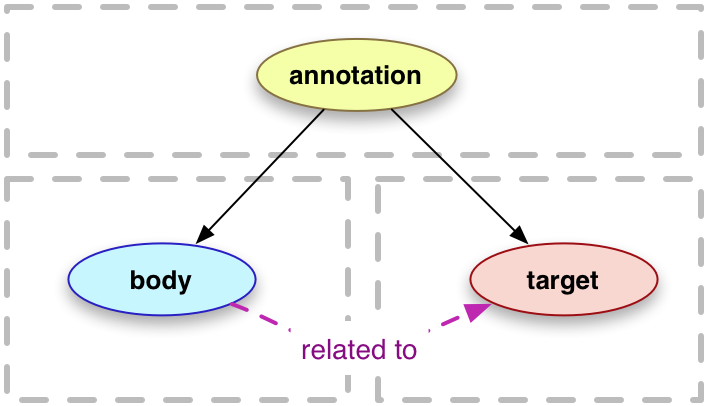Annotations
There are many uses of annotations they can be:
- Transcribing documents either by hand or using automated methods like Transkribus for hand written material or OCR for printed works.
- Created as part of a Crowdsourcing project
- Created through research for example tagging common features in art works or identifying hand written annotations in a printed book
- Created for teaching or explaining content.
- A way of discussing content maybe in a classroom setting as an assignment
Annotations in IIIF follow the W3C annotation model and its precursor Open Annotations. I won't go into too much detail but the overall structure looks as follows:

Where:
- The annotation contains links to the body and target and metadata like an ID and motivation (the reason for the annotation e.g. commenting, transcribing etc.)
- The body is the content of the annotation for example a tag or the text of a line
- The target is what the annotation is pointing to for example a page in a book or a region of an artwork.
As with a Manifest this is also encoded in JSON and you can see an example below:
{
"id": "http://localhost:8887/coin/list/1",
"type": "Annotation",
"motivation": "commenting",
"body": {
"type": "TextualBody",
"format": "text/plain",
"chars": "Zeus seated on stool-throne"
},
"target": "http://localhost:8887/coin/canvas#xywh=3706,208,522,522"
}
For the following image:

The other terminology we may come across is an Annotation List or Annotation Page in IIIF 3.0. These are as you might expect are a list of annotations and are generally at a page level.